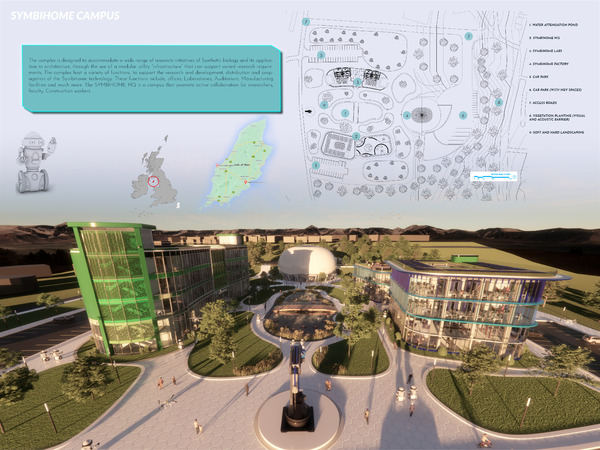This research aims to develop the novel technology of the symbihome panel as an alternative to pv cells, utilizing the properties of the living system of microagae photosynthesising within a growing medium, as a solar energy generating device, solar shading device with heat absorption and water filtration capabilities. Created additively from chitin pte a bioplastic created from seashell waste. Within this studio I will explore its application as an integrated facade panel, its mechanical systems and applications within building technology, the aim is to design a facility for the research, production and dissemination of this novel technology. The aspiration for this project is to inspire further development into this field of research, I believe truly sustainable design is achievable at the intersection of nature, advanced manufacturing and computational design.
The SYMBIHOME Campus plays an important role as a pilot scheme for CO2 reduction and carbon sequestration in the building sector, and in general, as a low-carbon approach for buildings in future urban environments. With a sustainable energy design for energy efficient buildings, it can generate energy through its own envelope, store it, and use it itself. Moreover it is able to generate energy using the algae biomass produced by its own façade. The Symbihome façade collects energy by absorbing the light that is not used by the algae and generating heat, like in a solar thermal unit, which is then either used directly for hot water or heating.
The Symbihome panels that cover the southern facade of the Symbihome labs produce heat and biomass to supply the building with energy from renewable sources. In addition, the façades also serve the conventional purposes of insulating the building from sound, heat, and cold, while providing shade in bright sunlight.
Through the carbon capturing property of algae, the building not only generates clean energy, but also stores carbon emissions and hence removes them in the atmosphere. The project demonstrates the establishment of innovative energy production and air pollution reduction in urban development. Using a smart energy solution, it exemplifies a good practice for future urban contexts and low-carbon development.


